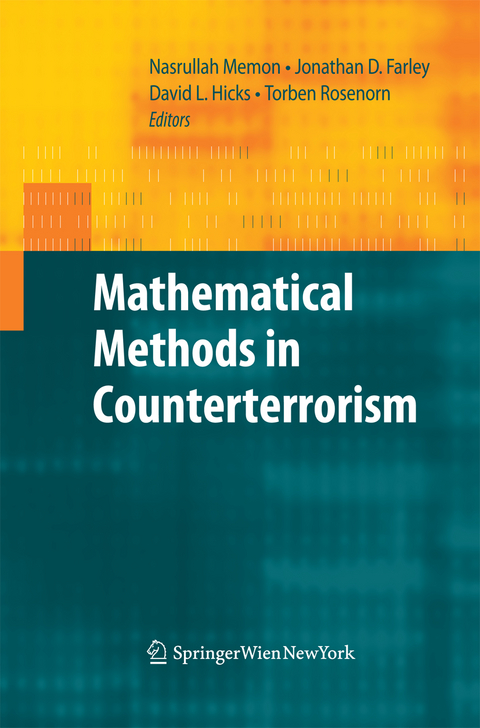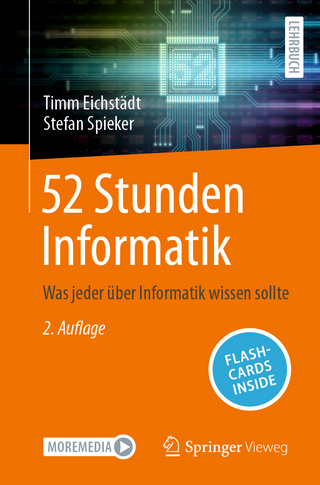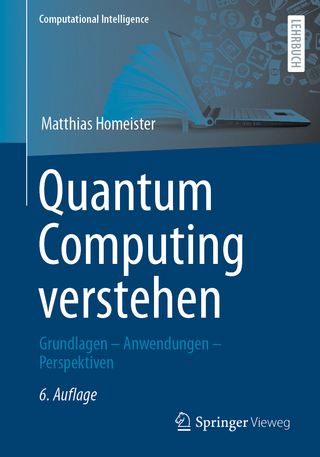
Mathematical Methods in Counterterrorism
Springer Wien (Verlag)
978-3-7091-1664-7 (ISBN)
Terrorism is one of the serious threats to international peace and security that we face in this decade. No nation can consider itself immune from the dangers it poses, and no society can remain disengaged from the efforts to combat it. The termcounterterrorism refers to the techniques, strategies, and tactics used in the ?ght against terrorism. Counterterrorism efforts involve many segments of so- ety, especially governmental agencies including the police, military, and intelligence agencies (both domestic and international). The goal of counterterrorism efforts is to not only detect and prevent potential future acts but also to assist in the response to events that have already occurred. A terrorist cell usually forms very quietly and then grows in a pattern - sp- ning international borders, oceans, and hemispheres. Surprising to many, an eff- tive "weapon", just as quiet - mathematics - can serve as a powerful tool to combat terrorism, providing the ability to connect the dots and reveal the organizational pattern of something so sinister. The events of 9/11 instantly changed perceptions of the wordsterrorist andn- work, especially in the United States. The international community was confronted with the need to tackle a threat which was not con?ned to a discreet physical - cation. This is a particular challenge to the standard instruments for projecting the legal authority of states and their power to uphold public safety. As demonstrated by the events of the 9/11 attack, we know that terrorist attacks can happen anywhere.
Mathematical Methods in Counterterrorism: Tools and Techniques for a New Challenge.- Mathematical Methods in Counterterrorism: Tools and Techniques for a New Challenge.- Network Analysis.- Modeling Criminal Activity in Urban Landscapes.- Extracting Knowledge from Graph Data in Adversarial Settings.- Mathematically Modeling Terrorist Cells: Examining the Strength of Structures of Small Sizes.- Combining Qualitative and Quantitative Temporal Reasoning for Criminal Forensics.- Two Theoretical Research Questions Concerning the Structure of the Perfect Terrorist Cell.- Forecasting.- Understanding Terrorist Organizations with a Dynamic Model.- Inference Approaches to Constructing Covert Social Network Topologies.- A Mathematical Analysis of Short-term Responses to Threats of Terrorism.- Network Detection Theory.- Communication/Interpretation.- Security of Underground Resistance Movements.- Intelligence Constraints on Terrorist Network Plots.- On Heterogeneous Covert Networks.- Two Models for Semi-Supervised Terrorist Group Detection.- Behavior.- CAPE: Automatically Predicting Changes in Group Behavior.- Interrogation Methods and Terror Networks.- Terrorists and Sponsors. An Inquiry into Trust and Double-Crossing.- Simulating Terrorist Cells: Experiments and Mathematical Theory.- Game Theory.- A Brinkmanship Game Theory Model of Terrorism.- Strategic Analysis of Terrorism.- Underfunding in Terrorist Organizations.- History of the Conference on Mathematical Methods in Counterterrorism.- Personal Reflections on Beauty and Terror.
| Erscheint lt. Verlag | 11.11.2014 |
|---|---|
| Zusatzinfo | XIII, 389 p. |
| Verlagsort | Vienna |
| Sprache | englisch |
| Maße | 155 x 235 mm |
| Gewicht | 617 g |
| Themenwelt | Mathematik / Informatik ► Informatik ► Theorie / Studium |
| Mathematik / Informatik ► Mathematik ► Algebra | |
| Mathematik / Informatik ► Mathematik ► Analysis | |
| Mathematik / Informatik ► Mathematik ► Computerprogramme / Computeralgebra | |
| Mathematik / Informatik ► Mathematik ► Wahrscheinlichkeit / Kombinatorik | |
| Recht / Steuern ► Strafrecht ► Kriminologie | |
| Sozialwissenschaften ► Politik / Verwaltung | |
| Schlagworte | Calculus • Computer Security • counterterrorism • Data Analysis of terrorist activity • Emergency response and planning • ETA • Homeland Security • Information harvesting • Intelligence • Mathematical Methods • Palestine Liberation Organization • security • terrorism • Terrorist • Topologie |
| ISBN-10 | 3-7091-1664-3 / 3709116643 |
| ISBN-13 | 978-3-7091-1664-7 / 9783709116647 |
| Zustand | Neuware |
| Informationen gemäß Produktsicherheitsverordnung (GPSR) | |
| Haben Sie eine Frage zum Produkt? |
aus dem Bereich


